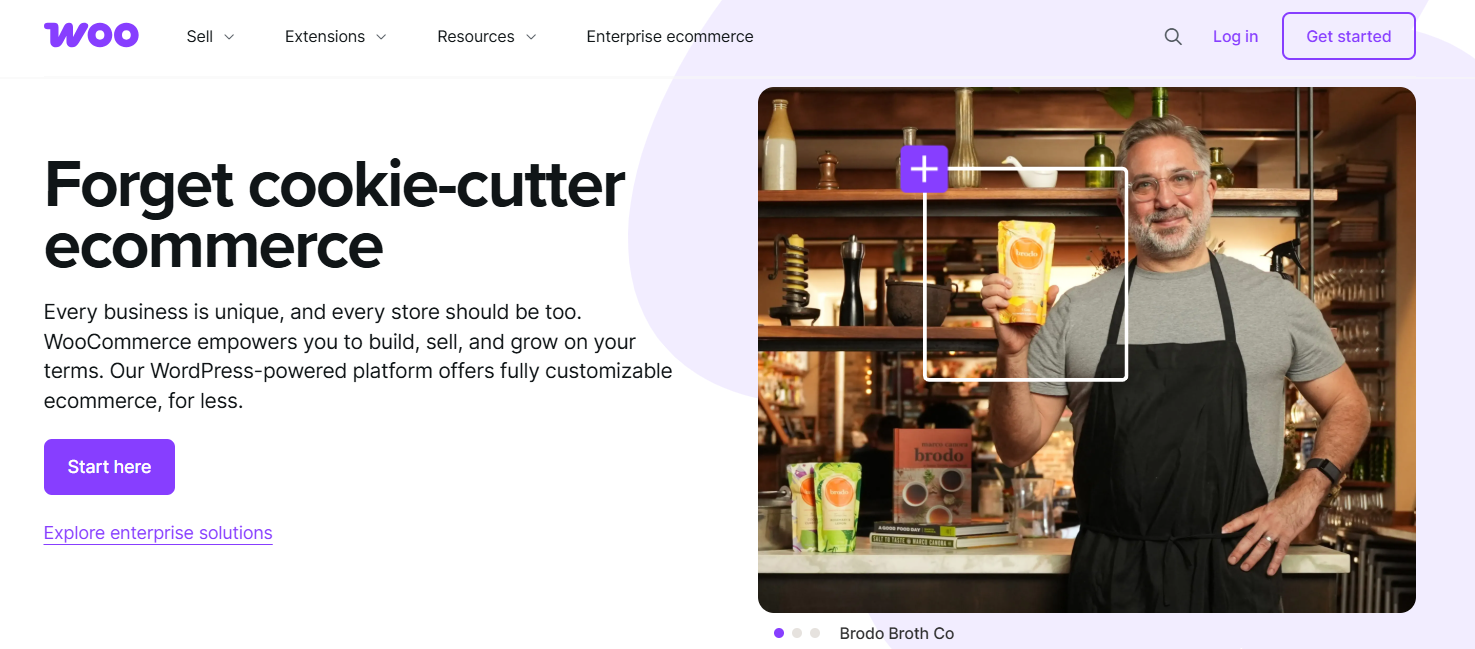The Canadian e-commerce market is experiencing one of its fastest growth phases, with online retail sales projected to surpass USD 80 billion by 2025. For entrepreneurs, this makes dropshipping in Canada an attractive business model: you can sell to a high-spending customer base without holding inventory or managing complex logistics.
What sets Canada apart is its unique blend of advantages: a digitally active population, proximity to the US for cross-border trade, and strong consumer trust in online transactions. Canadian shoppers value transparency, reliable fulfillment, and eco-conscious products, creating plenty of room for new sellers who can deliver on these expectations.
Starting a dropshipping business in Canada in 2025 doesn’t just mean selling trending products—it’s about adapting to a bilingual market, understanding provincial tax systems, and building a brand that resonates with local buyers. With the right suppliers, tools, and strategies, even beginners can establish a profitable and scalable store in this market.
This guide will take you step by step through everything you need to know: from choosing a niche and finding reliable suppliers to setting up your store, managing compliance, and marketing effectively to Canadian consumers.
What Makes Canada a Unique Market for Dropshipping
When considering dropshipping in Canada, it’s important to recognize the factors that make this market different from other countries. Canada isn’t just an extension of the US—it has its own consumer behavior, logistics realities, and cultural nuances that sellers need to understand in order to succeed.
1. Bilingual Consumer Base
Canada’s official languages are English and French, with a large portion of French speakers concentrated in Quebec. For dropshippers, this means that bilingual product descriptions, ads, and customer support can significantly increase trust and conversions.
2. High Purchasing Power
Canadian consumers have one of the highest average disposable incomes in the world. They’re willing to pay more for quality products, eco-friendly goods, and reliable service. This creates room for sellers to focus on value-driven niches instead of competing on price alone.
3. Strong E-Commerce Adoption
With internet penetration above 95% and widespread use of mobile shopping apps, Canadians are highly engaged online buyers. Platforms like Amazon.ca, Shopify stores, and Etsy are central to the online shopping experience, making Canada a prime environment for dropshipping businesses.
4. Proximity to the US
Canada’s geographical location provides a unique advantage: sellers can easily target both Canadian and American markets with the same store setup. By leveraging cross-border logistics, dropshippers can scale faster and reduce shipping costs compared to sourcing exclusively from Asia.
5. Eco-Conscious and Trust-Oriented Shoppers
Canadians place strong emphasis on sustainability, transparency, and trust. They prefer clear return policies, transparent shipping times, and environmentally friendly packaging. Brands that highlight these elements often gain a competitive edge.

Step 1: Choose a Profitable Niche in Canada
The foundation of every successful dropshipping Canada business is selecting the right niche. A good niche aligns with Canadian consumer demand, seasonal trends, and your ability to source products efficiently. Unlike saturated global markets, Canada still has room for specialized products—especially those that meet local lifestyle needs and cultural preferences.
How to Research Niches in Canada
-
Use Market Data: Check Amazon.ca best-sellers, Google Trends (Canada region), and Shopify’s trending reports.
-
Leverage Seasonality: Canadian buying habits shift with the seasons—think winter gear, holiday gifts, or summer camping supplies.
-
Validate Margins: Look for products where you can maintain at least 25–40% profit margins after shipping and fees.
Top Niches to Consider in 2025
-
Winter & Outdoor Gear
With long winters and a culture that embraces outdoor activities, Canadians spend heavily on warm apparel, thermal accessories, snow gear, and camping essentials.
Tip: Focus on compact, lightweight products to keep shipping costs manageable. -
Home & Living Products
Canadians value comfort and organization. Smart storage solutions, ergonomic office furniture, and kitchen gadgets are in high demand.
Tip: Offer bundles (e.g., kitchen utensil sets) to increase average order value. -
Pet Supplies
Pet ownership in Canada is at an all-time high, and spending on pet toys, grooming, and accessories continues to rise.
Tip: Promote eco-friendly or customizable items—pet owners are willing to spend more for unique products. -
Eco-Friendly Everyday Goods
From bamboo toothbrushes to reusable bags, sustainability is a driving force in Canadian consumer behavior.
Tip: Highlight eco benefits in your product descriptions—Canadians respond well to green branding. -
Health & Wellness
Fitness gear, supplements, skincare, and massage tools are growing niches fueled by Canada’s health-conscious lifestyle.
Tip: Always ensure compliance for products like supplements or cosmetics to avoid regulatory issues.
The best niches for dropshipping in Canada combine local lifestyle relevance (winter, outdoor, eco-friendly) with global e-commerce appeal. By aligning your store with Canadian values—comfort, sustainability, and trust—you’ll stand out in a competitive market.
Step 2: Find Reliable Dropshipping Suppliers (Top Picks for Canada)
No matter how strong your niche is, your business will only succeed if you partner with reliable suppliers. In dropshipping Canada, suppliers determine your shipping speed, product quality, and customer satisfaction. Choosing wisely can save you from refund disputes, negative reviews, and logistical headaches.
Here are some of the best supplier options for Canadian dropshippers in 2025:
1. CJdropshipping – Best All-in-One Global Supplier
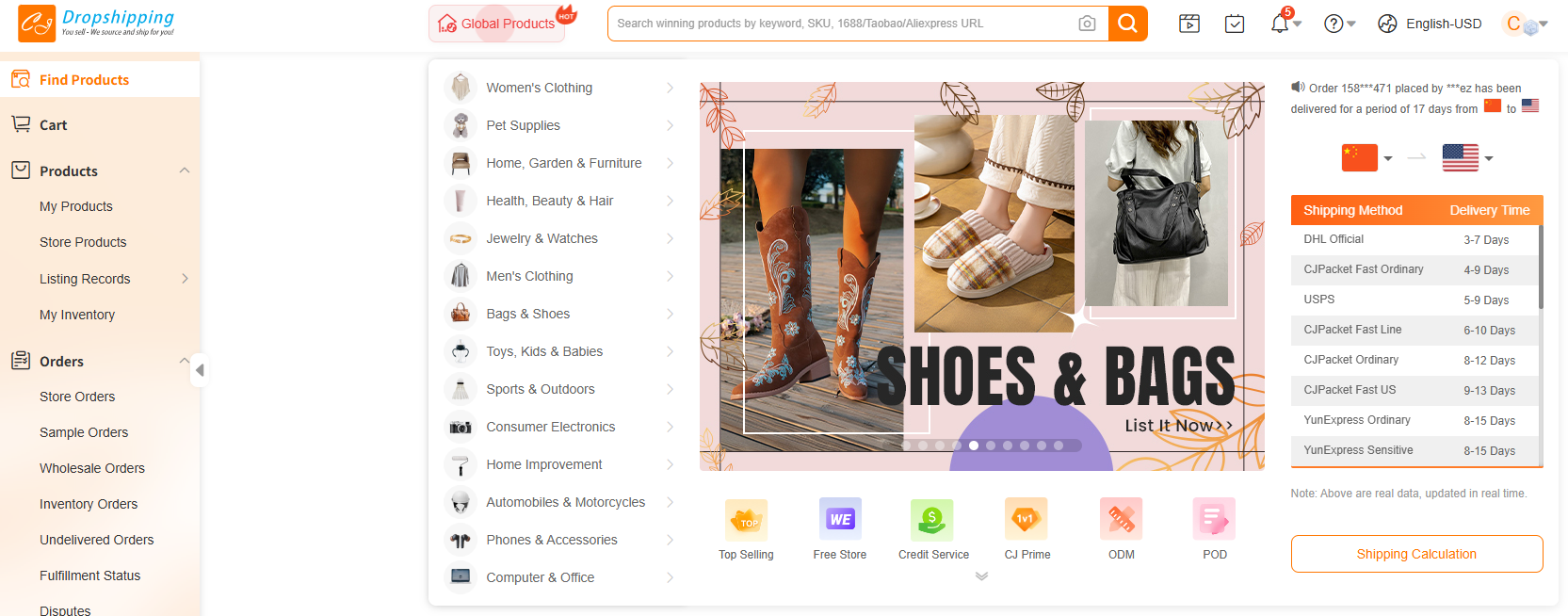
CJdropshipping is one of the most complete solutions for Canadian entrepreneurs looking to grow quickly.
-
Why it works: Offers product sourcing, POD (print-on-demand), branding, and automated fulfillment under one roof.
-
Canada advantage: Products can be shipped directly from CJ’s US warehouse, significantly reducing delivery times to Canadian buyers. This helps eliminate the long shipping delays often associated with Asia-based suppliers.
-
Integration: Seamless with Shopify, WooCommerce, Etsy, and TikTok Shop, which means order sync and tracking are automated.
-
Best for: Beginners who want to minimize risk while scaling with automation and a wide product catalog.
2. Spocket – Strong Focus on Local Suppliers
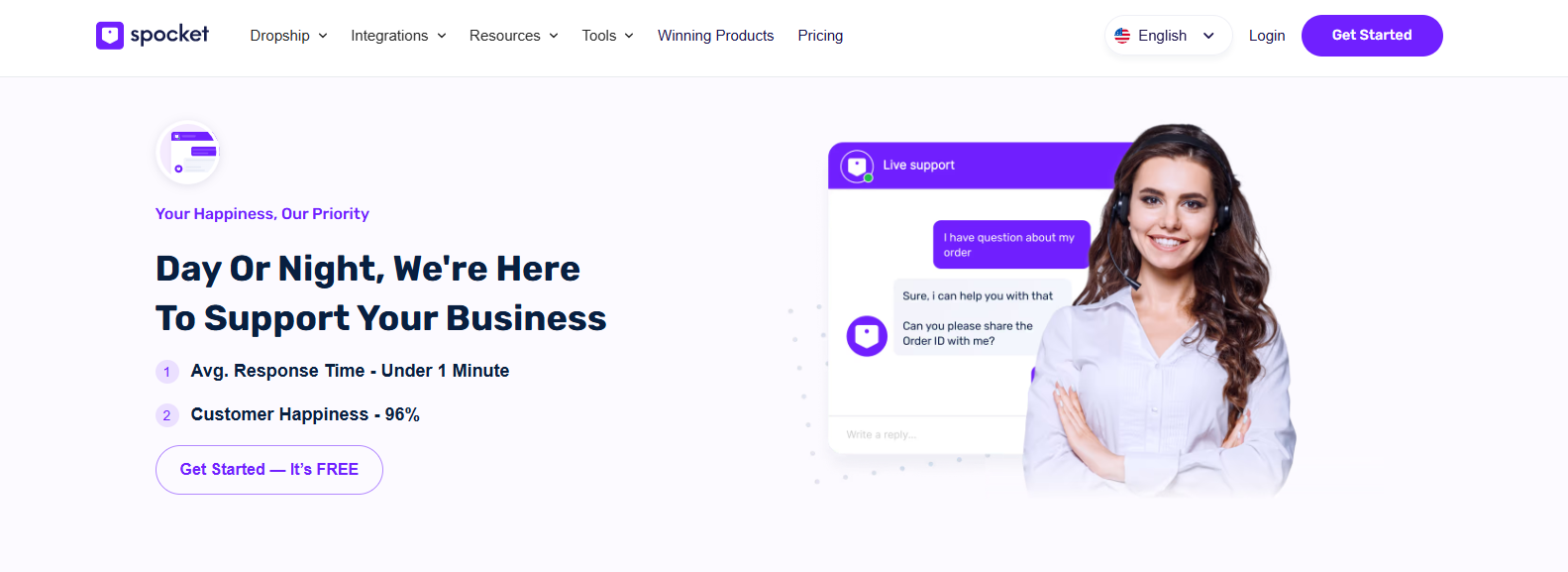
Spocket connects you to a wide network of US and EU suppliers, with some Canadian-based partners.
-
Strengths: Emphasis on fast shipping, branded invoicing, and an easy-to-use dashboard.
-
Limitations: Smaller product catalog compared to CJdropshipping.
-
Best for: Sellers targeting Canadian buyers who want fast local delivery.
3. SaleHoo – Directory of Vetted Suppliers
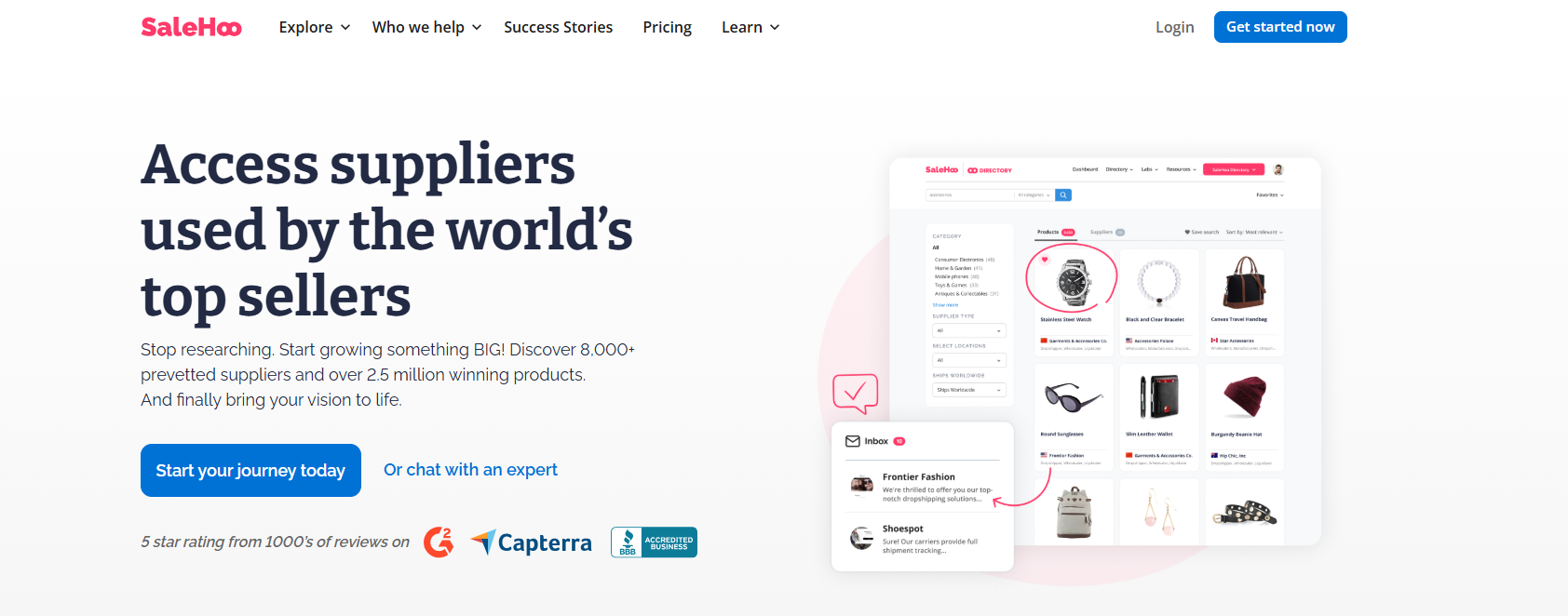
SaleHoo is a trusted supplier directory that helps entrepreneurs find wholesalers and dropshipping suppliers.
-
Strengths: Large database of vetted suppliers; good for niche-specific product searches.
-
Limitations: Requires subscription; fewer built-in automation tools.
-
Best for: Sellers who like to explore niche product opportunities and don’t mind more manual supplier management.
4. Doba – Simple Dropshipping Integration
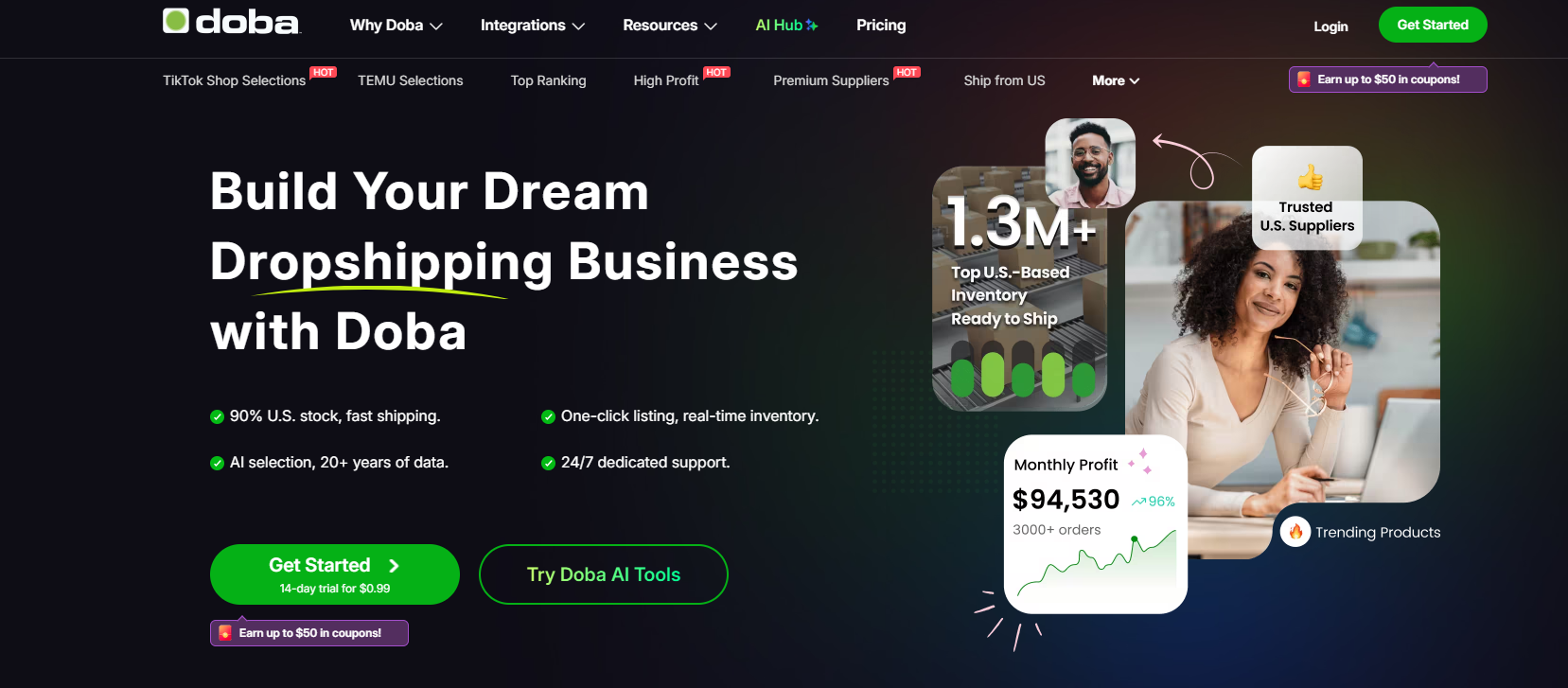
Doba offers a wide catalog and straightforward integrations with popular platforms.
-
Strengths: Beginner-friendly interface, broad product selection.
-
Limitations: Markups can be higher compared to sourcing directly.
-
Best for: New dropshippers who want simplicity and ease of use.
5. Wholesale2B – Multi-Channel Supplier Access
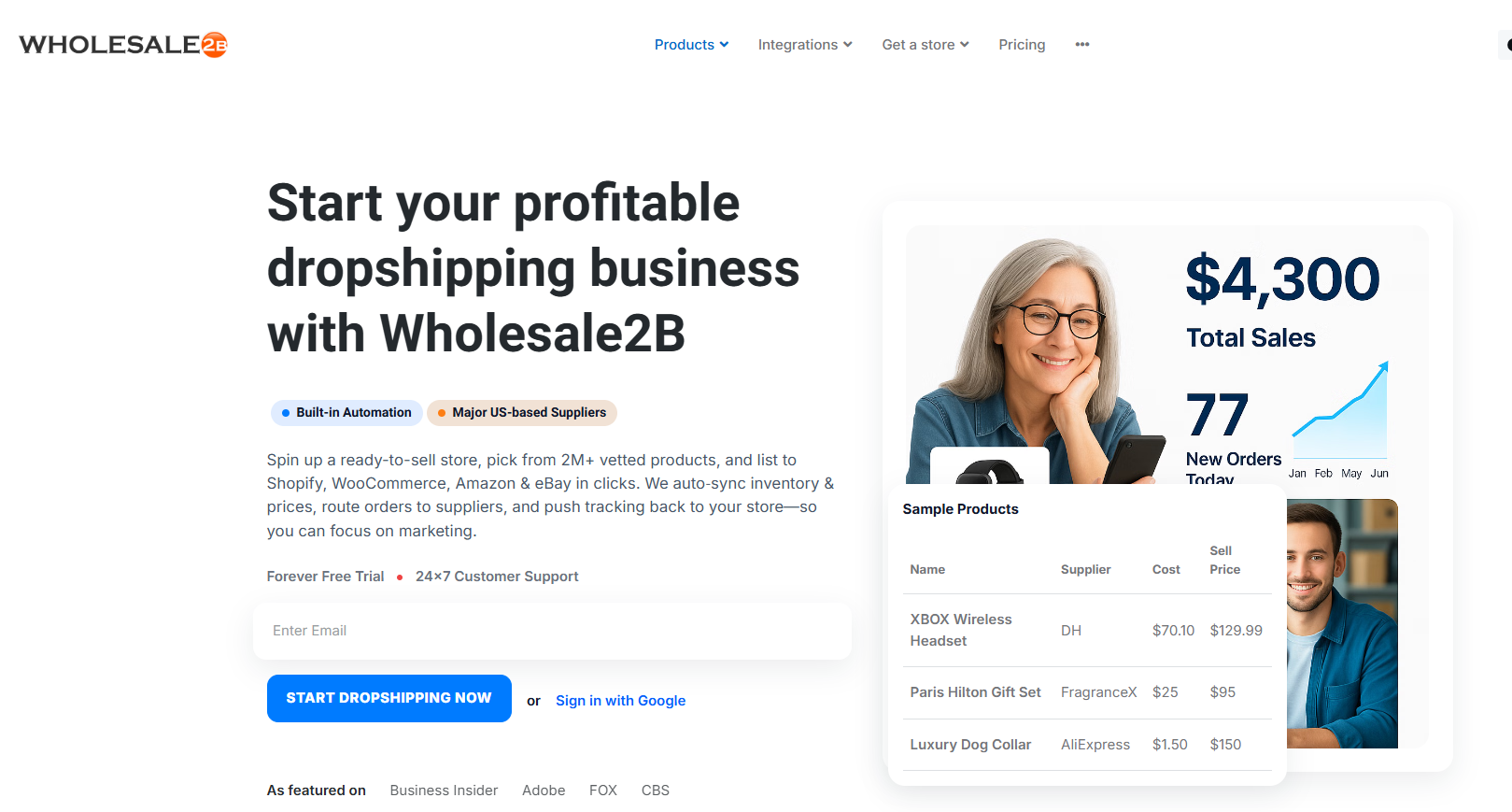
Wholesale2B is another platform that connects you to thousands of suppliers and supports marketplace integrations.
-
Strengths: One-stop access to multiple suppliers, automated order routing.
-
Limitations: Monthly subscription fees; varying product quality depending on the supplier.
-
Best for: Sellers wanting to expand across multiple channels like Amazon, eBay, and Shopify.
Step 3: Select the Right E-Commerce Platform
Your choice of e-commerce platform will shape how smoothly your dropshipping Canada business operates. From store design to payment processing and app integrations, the right platform can make launching and scaling far easier—especially for beginners who want automation and minimal technical hurdles.
Shopify – The All-in-One Choice (Best for Beginners)
Shopify is a Canadian-born company and the most popular choice for dropshippers in Canada.
-
Strengths: User-friendly interface, huge app marketplace, reliable hosting, and seamless integrations with suppliers like CJdropshipping.
-
Canada advantage: Local payment gateways like Shopify Payments and Interac e-Transfer make checkout frictionless for Canadian customers.
-
Best for: Beginners and growing sellers who want a platform that “just works” without complicated setup.
WooCommerce (WordPress) – Best for Control & Low Fees
WooCommerce is a free, open-source plugin for WordPress, giving sellers maximum control.
-
Strengths: Low monthly costs, full customization, and a large ecosystem of plugins.
-
Limitations: Requires more technical knowledge and a self-hosting setup.
-
Best for: Sellers who want long-term flexibility, custom store design, and control over costs.
Etsy – Best for Handmade & Niche Products
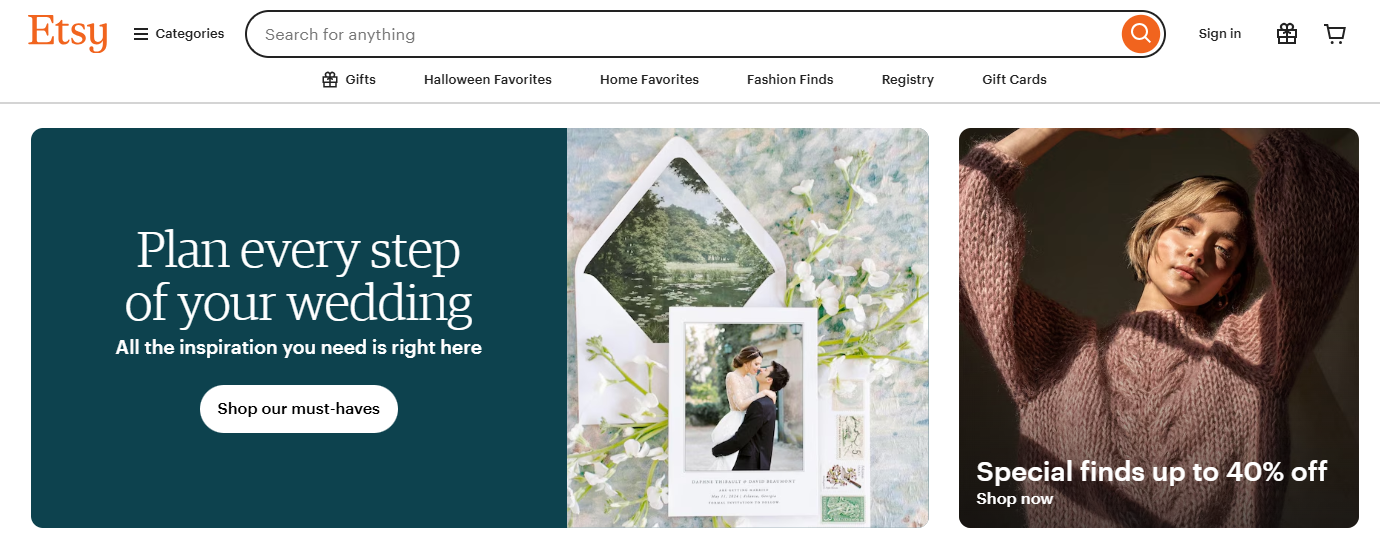
Etsy is well-suited for sellers offering custom, artistic, or POD items.
-
Strengths: Built-in marketplace traffic, trust with buyers, and POD integrations.
-
Limitations: Transaction fees and restrictions on reselling generic products.
-
Best for: Sellers who want to test niche or creative products without heavy marketing.
Amazon.ca – Best for High-Trust Buyers
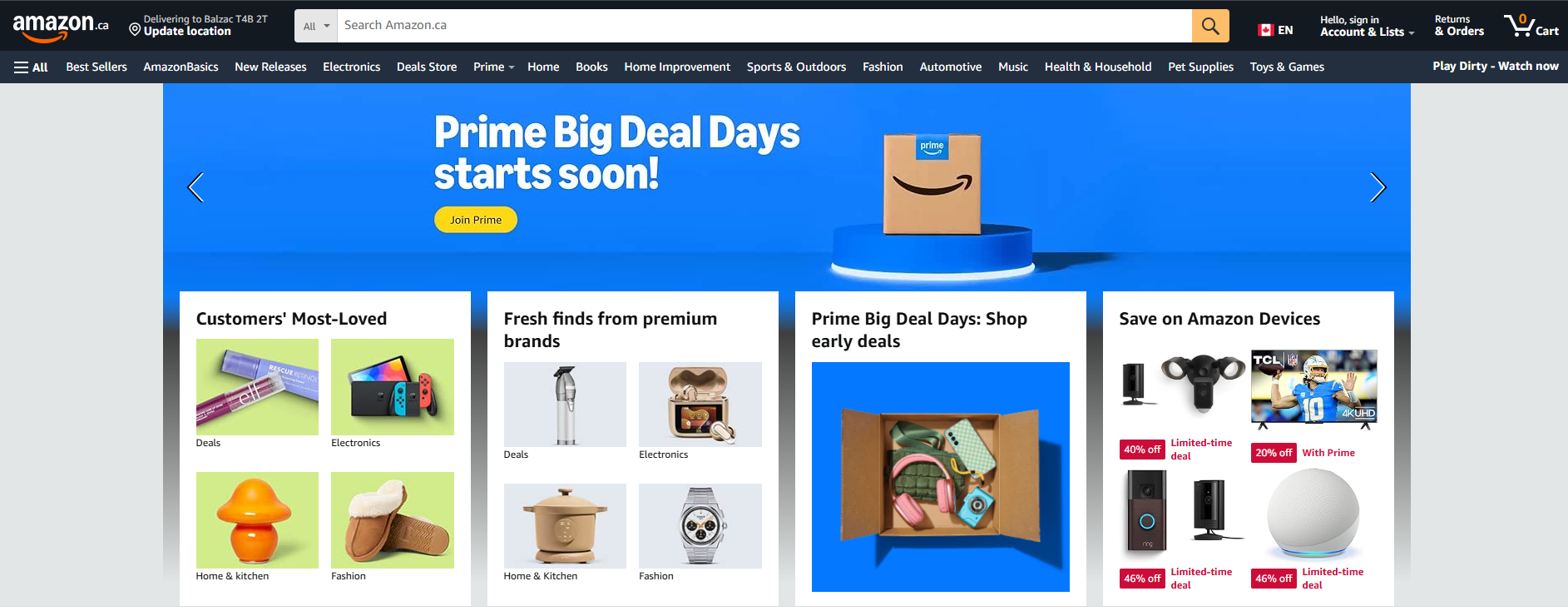
Selling through Amazon Canada taps into one of the country’s largest e-commerce audiences.
-
Strengths: Strong trust factor, Prime customer base, and built-in logistics options (FBA).
-
Limitations: Strict policies, high competition, and lower brand-building opportunities.
-
Best for: Sellers prioritizing volume and visibility over brand identity.
Step 4: Register Your Business & Understand Canadian Regulations
Starting a dropshipping Canada business isn’t just about picking products and setting up a store—it also means making sure your operation is legally registered and compliant with local rules. Getting this step right builds credibility with customers, protects your business, and helps you avoid tax or customs issues later on.
1. Register Your Business Structure
In Canada, you can choose from several business structures depending on your goals:
-
Sole Proprietorship – The simplest and cheapest option, best for testing the waters. Your business income is reported on your personal taxes.
-
Partnership – Suitable if you’re running the store with someone else. Profits and liabilities are shared.
-
Corporation (Inc.) – Offers liability protection and tax planning advantages but comes with higher setup and compliance costs. Best for scaling or long-term operations.
Most new dropshippers in Canada start as a sole proprietorship and later incorporate once sales grow.
2. Understand Canadian Tax Obligations
-
GST/HST: Canada uses a Goods and Services Tax (GST) and, in some provinces, a combined Harmonized Sales Tax (HST). Once your sales exceed CAD 30,000 annually, you must register for a GST/HST number and collect tax at checkout.
-
Provincial Taxes: Quebec (QST) and some other provinces have additional requirements.
-
Tip: Platforms like Shopify and suppliers like CJdropshipping offer built-in tax calculation tools to simplify compliance.
3. Import Duties & Customs
Even though you don’t stock products yourself, customs duties may apply when goods enter Canada from international suppliers. Duties depend on product category and origin.
-
Best practice: Confirm with your supplier whether duties are included in shipping or passed to the customer at delivery. Unexpected fees can hurt your reputation.
4. Consumer Protection & Refund Policies
Canadian buyers expect clear refund and return policies, often modeled after big platforms like Amazon. Having a transparent policy builds trust and ensures you comply with provincial consumer protection standards.
5. Keep Records & Stay Compliant
Maintain accurate records of income, expenses, and sales tax collected. This not only keeps you compliant but also positions your store for smooth scaling or incorporation later.
Legal setup may feel like a hurdle, but it actually strengthens your business in the long run. By registering properly, handling taxes, and being transparent with customers, your dropshipping Canada store will stand out as trustworthy in a competitive space.
Step 5: Set Up Payment Methods and Tax Compliance
For your dropshipping Canada store to succeed, customers must be able to pay easily and securely, and your business must stay compliant with tax obligations. A smooth checkout experience builds trust and boosts conversions, while proper tax handling prevents regulatory headaches later.
1. Payment Methods Canadians Prefer
Canadian shoppers expect to see familiar and reliable payment options at checkout. The most popular include:
-
Credit & Debit Cards – Visa, MasterCard, and American Express are widely used.
-
PayPal – Trusted across Canada for its buyer protection and fast checkout.
-
Shopify Payments – For Shopify users, this integrates seamlessly with local banks and supports CAD transactions.
-
Interac e-Transfer – A Canadian favorite, especially for mobile shoppers. Offering this can significantly increase trust and reduce cart abandonment.
-
Apple Pay & Google Pay – Growing quickly as mobile commerce expands.
Pro tip: Offer at least two to three major payment methods to cover all buyer preferences.
2. Tax Compliance for Dropshipping in Canada
Taxes can feel overwhelming, but setting up the right system early saves trouble later.
-
GST/HST Registration: If your annual revenue exceeds CAD 30,000, you are legally required to register for a GST/HST account and collect sales tax at checkout.
-
Provincial Taxes: Some provinces, like Quebec, require additional registrations (e.g., QST).
-
Cross-Border Sales: If you sell to US or international customers, taxes depend on the customer’s jurisdiction—but for Canadian buyers, GST/HST must always be handled properly.
3. Automating Tax Calculations
Platforms like Shopify, WooCommerce, and supplier partners such as CJdropshipping offer built-in tax calculation tools. This ensures customers are charged the correct rate depending on their province, and you can remit taxes without errors.
4. Record Keeping & Reporting
-
Keep detailed records of all sales, tax collected, and expenses.
-
Use accounting tools like QuickBooks or Wave, or Shopify’s reporting dashboard for small businesses.
-
Set reminders for quarterly or annual filings, depending on your tax setup.
Step 6: Build and Localize Your Dropshipping Store
Once you’ve chosen your niche, suppliers, and platform, it’s time to design your online storefront. In dropshipping Canada, success doesn’t come from just having products listed—it comes from building a store that feels trustworthy, user-friendly, and tailored to Canadian shoppers.
1. Choose a Clean, Conversion-Friendly Design
-
Use a simple layout with clear navigation and mobile-first design (over 60% of Canadian shoppers buy on mobile).
-
Highlight best-sellers and seasonal products on the homepage.
-
Add professional product images and detailed descriptions to reduce buyer hesitation.
2. Build Trust with Canadian Shoppers
Canadians are trust-oriented buyers. Small signals can make a big difference:
-
Show CAD pricing – Avoid confusion by listing all prices in Canadian dollars.
-
Display shipping times clearly and offer tracking updates.
-
Add policies upfront – Refund, exchange, and privacy policies should be easy to find.
-
Social proof – Feature customer reviews and testimonials, ideally with local Canadian buyers.
3. Localize for Bilingual Audiences
-
Canada’s bilingual culture means English and French support can dramatically improve reach.
-
Translate key pages like product descriptions, FAQs, and checkout into French, especially if you’re targeting Quebec.
-
Even a partial bilingual approach signals inclusivity and professionalism.
4. Optimize for SEO in Canada
-
Use keywords like “dropshipping Canada”, “fast shipping Canada,” or niche-specific terms (e.g., “eco-friendly dropshipping products Canada”).
-
Submit your store to Google Canada (google.ca) for better local visibility.
-
Build backlinks from Canadian blogs, influencers, and directories.
5. Add Essential Apps & Integrations
To run smoothly, integrate tools that support automation and customer experience:
-
CJdropshipping app for product sourcing, automatic fulfillment, and real-time inventory updates.
-
Currency and language switchers to appeal to bilingual and international visitors.
-
Email and SMS marketing tools (e.g., Klaviyo, Omnisend) for customer retention.
A localized, trust-driven store is the difference between abandoned carts and long-term customer loyalty in dropshipping Canada. By showing prices in CAD, offering bilingual support, and integrating automation tools like CJdropshipping, you’ll give Canadian shoppers a professional experience that rivals big retailers.
Step 7: Plan Fulfillment and Shipping in Canada
Even with the right niche, suppliers, and store setup, your dropshipping Canada business will only succeed if you can deliver products reliably. Shipping speed and transparency are two of the biggest factors influencing customer trust and repeat purchases. Canadians are willing to shop online more than ever, but they expect a seamless delivery experience.
1. Understand Canadian Shipping Carriers
The most common options include:
-
Canada Post – Wide coverage, affordable for standard parcels, strong domestic network.
-
Purolator – Fast and reliable for express deliveries within Canada.
-
UPS & FedEx – Strong international shipping options and advanced tracking.
-
DHL – Better suited for international orders requiring speed.
Tip: Offer multiple options at checkout—standard, expedited, and express—to give buyers flexibility.
2. Leverage Cross-Border Fulfillment
Many Canadian dropshippers source products internationally, which can result in long wait times if shipped directly from Asia. To solve this:
-
Use suppliers like CJdropshipping, which operate US warehouses that ship to Canada quickly, cutting delivery times to 3–7 days.
-
For high-demand items, ask suppliers if they can pre-stock inventory in North America.
3. Be Transparent with Delivery Times
Canadian shoppers value honesty. If delivery will take 10–15 days for certain items, clearly state it at checkout. Customers are more forgiving of longer timelines when expectations are managed upfront.
4. Consider Free Shipping Thresholds
Offering free shipping for orders above a certain amount (e.g., CAD 75 or CAD 100) can increase average order value and offset shipping costs. This strategy is common in Canadian e-commerce and works especially well in niches like fashion, home goods, and pet supplies.
5. Packaging and Customs Considerations
-
Customs & Duties: Clarify whether duties are included in shipping costs to avoid unexpected charges for buyers.
-
Eco-Friendly Packaging: Canadians respond positively to brands that use recyclable or sustainable packaging.
-
Branded Packaging: You can add custom labels and inserts to strengthen brand recognition.
6. Returns and Reverse Logistics
Having a clear return policy is essential for Canadian customers. Work with suppliers who can handle returns efficiently—ideally with a North American return address. This builds confidence and reduces disputes.
Step 8: Market Your Dropshipping Business to Canadian Consumers
No matter how polished your store looks or how reliable your suppliers are, your dropshipping Canada business won’t thrive without effective marketing. Canadian consumers are digitally active, but they expect authentic, localized messaging. Winning them over requires a mix of the right channels, trust-building strategies, and data-driven campaigns.
1. Leverage Social Media Advertising
-
Facebook & Instagram Ads: Still the most effective platforms for reaching Canadians, particularly for lifestyle, fashion, and home products.
-
TikTok Ads: A fast-growing channel in Canada, especially for Gen Z and Millennials. Viral short videos can turn niche products into best-sellers.
-
Localized Targeting: Use geo-targeting to focus on specific provinces (e.g., French ads in Quebec).
2. Invest in Influencer Marketing
Canadians value peer recommendations. Partnering with micro-influencers (1k–50k followers) often delivers higher engagement than big-name accounts. Lifestyle, outdoor, eco-friendly, and pet niches are particularly strong for influencer-driven campaigns.
3. Optimize for Canadian SEO
-
Use local keywords such as “eco-friendly products Canada” or “pet supplies Toronto.”
-
Register your store on Google My Business if you plan to target local audiences.
-
Create blog content that answers local queries—this builds organic traffic and authority.
4. Run Email & SMS Campaigns
Email marketing remains one of the highest ROI tools.
-
Use platforms like Klaviyo or Omnisend to automate welcome flows, abandoned cart reminders, and seasonal promotions.
-
For Canadian audiences, SMS campaigns with special offers work well, particularly for flash sales or limited-time shipping promotions.
5. Highlight Canadian Values in Messaging
-
Trust: Showcase clear refund policies, verified reviews, and customer support availability.
-
Sustainability: Highlight eco-friendly packaging or products—Canadian buyers are especially receptive.
-
Local Appeal: Even if products are sourced globally, emphasize fast Canadian delivery through suppliers like CJdropshipping.
6. Seasonal & Event-Based Promotions
Canadians shop heavily around Black Friday, Boxing Day, Canada Day, and the holiday season. Tailor promotions and bundles to align with these key shopping dates.
Common Challenges of Dropshipping in Canada (and How to Overcome Them)
Running a dropshipping Canada business in 2025 offers big opportunities, but like any market, it comes with challenges. Many of these hurdles can be anticipated and solved with the right approach. Here are the most common issues sellers face—and how to handle them effectively.
1. Higher Shipping Costs
The challenge: Canada is a large country with a relatively small population spread across vast distances. This makes domestic and cross-border shipping more expensive than in denser markets.
How to overcome it:
-
Partner with suppliers like CJdropshipping, which use US warehouses for faster, lower-cost cross-border delivery.
-
Offer free shipping above a certain threshold (e.g., CAD 75–100) to increase cart value and offset costs.
2. Longer Delivery Times from Overseas
The challenge: Products shipped directly from Asia can take 15–30 days, which doesn’t meet Canadian buyer expectations.
How to overcome it:
-
Choose suppliers with North American warehouses.
-
Be transparent at checkout with estimated delivery times to reduce cancellations.
3. Tax Complexity
The challenge: Canada’s GST/HST system varies by province, and sellers must know when and how to collect taxes.
How to overcome it:
-
Register for GST/HST once you pass CAD 30,000 in annual sales.
-
Use e-commerce tax automation tools (Shopify Tax, QuickBooks) to calculate the right rates for each province.
4. Bilingual Customer Expectations
The challenge: Canada’s bilingual environment, especially in Quebec, requires sellers to adapt their store and marketing.
How to overcome it:
-
Provide at least partial French translations for product pages and customer support.
-
Use bilingual ads when targeting Quebec to build trust and increase conversions.
5. Strong Competition from US Sellers
The challenge: Many Canadian buyers also shop from US-based online stores, meaning local dropshippers face strong cross-border competition.
How to overcome it:
-
Differentiate with faster shipping through suppliers like CJdropshipping.
-
Highlight Canadian values (eco-friendly, bilingual, transparent policies) to build a stronger local brand.
Key Insight: The biggest challenges in dropshipping Canada—shipping costs, delivery times, taxes, and competition—can all be managed with the right suppliers, automation tools, and localized strategies. Sellers who adapt quickly and focus on trust will have a clear advantage in 2025.
Conclusion: Is Dropshipping in Canada Worth It in 2025?
Dropshipping has always been about spotting the right market at the right time—and in 2025, Canada is one of those markets. With e-commerce sales climbing steadily, a tech-savvy population, and strong purchasing power, dropshipping in Canada offers fertile ground for entrepreneurs who are ready to adapt to local expectations.
Of course, challenges exist—higher shipping costs, complex taxes, and competition from US sellers—but none are deal breakers. With the right approach, such as choosing Canadian-relevant niches, localizing your store for bilingual audiences, and partnering with reliable suppliers like CJdropshipping that can ensure faster fulfillment through US warehouses, these hurdles can be turned into competitive advantages.
Ultimately, Canada is not just another dropshipping destination—it’s a market that rewards professionalism, transparency, and customer-centric service. For beginners looking for a stable entry point and for experienced sellers aiming to expand, 2025 is the year to take action.
Yes, dropshipping in Canada is worth it in 2025—but only if you commit to doing it right. Focus on building trust, delivering value, and leveraging strong supplier partnerships, and you’ll find Canada to be a market where your online business can thrive long-term.
FAQ for Dropshipping Canada
-
What are the legal requirements for starting a dropshipping business in Canada?
You’ll need to register your business, choose a legal structure (such as sole proprietorship or corporation), get a Business Number (BN) from the CRA, and comply with sales tax rules (GST/HST) depending on your province and revenue. -
Do I need to register for GST/HST to run a dropshipping store in Canada?
If your annual taxable revenue exceeds CAD 30,000, you must register for a GST/HST account. Even below this threshold, registering can make your business look more legitimate and allow you to claim input tax credits. -
What are the best platforms for starting a dropshipping business in Canada?
Popular choices include Shopify (a Canadian company), WooCommerce, and BigCommerce. These platforms integrate well with Canadian payment gateways, suppliers, and shipping carriers, making it easier to localize your store. -
How do shipping and delivery work for Canadian dropshipping businesses?
You can work with Canadian suppliers for faster domestic delivery or international suppliers for a wider product range. Partner with reliable carriers like Canada Post, UPS, or FedEx, and clearly communicate estimated delivery times to customers. -
What are some tips for finding reliable dropshipping suppliers in Canada?
Use trusted directories (e.g., CJdropshipping, SaleHoo, or Doba), attend trade shows, or source from local manufacturers. Check product quality with samples, evaluate shipping times, read reviews, and ensure they can integrate smoothly with your eCommerce platform.


